The Human Touch: What AI Can't Do (And Why You Still Need It)
We love talking about what AI can do for your business: amplifying your story, accelerating content creation, and streamlining social media.
Now let's talk about what it can't do.
Because here's the uncomfortable truth that nobody in the AI hype cycle wants to admit: AI is brilliant at certain tasks and completely useless at others.
Understanding the difference isn't just helpful. It's essential.
Use AI for the wrong things, and you'll damage your brand, alienate your audience, and waste time fixing problems AI created. Use it for the right things, and you'll free yourself up to focus on the work that actually builds your business.
So let's draw the line. Clearly. Permanently.
What AI Actually Can't Do
1. Know Your "Why"
AI doesn't understand why you started your business at 3am on a Tuesday after years of corporate frustration. It doesn't know what keeps you going when revenue is down and stress is high. It can't articulate what success actually means to you beyond generic metrics.
Your "why" is the foundation of every strategic decision you make. AI can't access it, understand it, or communicate it authentically.
What this means practically:
When you're deciding whether to take on a new client, launch a new service, or pivot your business model—that's human judgment. AI can give you data and options. It can't tell you what aligns with your values and vision.
2. Read the Room
AI can identify trending topics. It can't assess whether jumping into a conversation will make you look insightful or insensitive.
What this means practically: When news breaks in your industry – whether it's exciting, controversial, or tragic – the decision about whether and how to respond requires human judgment. AI sees data points. Humans see context, nuance, and potential consequences.
3. Build Real Relationships
Here's a test: Think about the last time someone surprised you with something thoughtful. Maybe they remembered a detail you mentioned weeks ago. Maybe they checked in when you were going through something difficult. Maybe they sent an article that made them think of you.
That created genuine connection, right?
Now imagine an AI did it. Suddenly it feels calculated and creepy.
AI can help you stay organized and follow up consistently. But the actual relationship building—the empathy, the genuine interest, the human warmth—that's irreplaceable.
What this means practically:
You can use AI to remind you to reach out to clients. You can't use AI to actually connect with them in a way that builds trust and loyalty. The follow-up is mechanical. The care behind it must be real.
4. Navigate Ambiguity
A client emails: "That didn't go quite how I expected."
What do they mean? Are they:
Disappointed with your service?
Pleasantly surprised?
Confused about the process?
Making a neutral observation?
Testing how you'll respond?
Context matters. Relationship history matters. Tone matters. What's happening in their business right now matters.
AI will give you a generic, safe response. A human reads between the lines and responds appropriately.
What this means practically:
In any situation where subtext, emotion, or relationship dynamics are important, AI is dangerously inadequate. Client communications, team management, conflict resolution, delicate negotiations—these require human intuition.
5. Exercise Creative Judgment
AI can generate hundreds of ideas. It can't tell you which one is actually brilliant for your specific situation.
Is this tagline clever or confusing? Is this blog angle fresh or overdone in your industry? Does this campaign feel authentic to your brand or like you're trying too hard?
These questions require taste, judgment, and understanding of your brand that extends beyond data.
What this means practically:
AI is your brainstorming partner, not your creative director. It generates options. You select, refine, and decide what actually represents your brand well.
6. Understand Your Audience (Really)
AI knows your audience demographics. It knows what content performs well. It knows when they're online.
But it doesn't know that your target client is dealing with imposter syndrome. Or that they're frustrated with vendors who overpromise. Or that they secretly worry they're not tech-savvy enough. Or that they're exhausted by marketing that feels pushy.
These insights come from actual conversations, observations, and empathy. They're what separate content that gets clicks from content that builds real connection.
What this means practically:
AI can help you execute content that resonates. But you need to tell it what "resonates" actually means for your specific audience. That intelligence comes from you.
7. Make Ethical Decisions
Should you share a client's success story even though it might reveal strategic information to competitors? Should you comment on a controversial industry issue or stay silent? Should you disclose your AI usage in content creation?
These aren't questions with "correct" answers in a database. They're judgment calls based on values, context, and potential consequences.
What this means practically:
Every time your business communication could affect your reputation, relationships, or integrity—that decision requires human oversight. AI has no values. You do.
Where Humans Are Irreplaceable
Let's flip this around. Instead of what AI can't do, let's talk about what humans do that creates actual business value:
Strategic Thinking
AI optimises. Humans strategise.
You decide where your business should go. What markets to enter. Which clients to pursue. How to position against competitors. When to pivot and when to persist.
These decisions require understanding context that extends far beyond data: market dynamics, competitive intelligence, industry relationships, timing, and intuition developed through experience.
Emotional Intelligence
Reading emotional subtext. Building trust. Navigating difficult conversations. Motivating your team. Handling client disappointment with grace.
This is human work. It's also the work that determines whether clients stay, refer others, and become advocates for your business.
Adaptive Problem-Solving
When something breaks—a client relationship, a campaign, a process—fixing it requires understanding the underlying issue, not just the symptoms.
AI can identify patterns in data. Humans identify why those patterns exist and what to do about them.
Taste and Curation
In a world where everyone can generate content, taste becomes the differentiator.
What's on-brand? What's overdone? What's clever versus what's trying too hard? Which design feels right? Which message will land?
This judgment—developed through experience, observation, and understanding your specific market—can't be automated.
Authentic Connection
People buy from people they trust. They trust people who seem genuine, who care about their success, who show up consistently as themselves.
AI can help you show up consistently. It can't make you genuine. That's entirely on you.
The Dangerous Middle Ground
Here's where businesses get into trouble: using AI for tasks that seem mechanical but actually require human judgment.
Some dangerous examples:
Responding to Client Concerns: AI can draft a response. But whether that response acknowledges emotion, takes appropriate responsibility, and rebuilds trust—that requires human oversight.
Pricing and Negotiation: AI can analyse data and suggest numbers. But reading the client, understanding context, and knowing when to hold firm versus when to find creative solutions—that's human work.
Giving Advice: If you're a consultant, coach, therapist, or any advisory role, AI can help you organize information. It cannot replace your professional judgment based on deep expertise and understanding of the client's unique situation.
Crisis Communication: When something goes wrong publicly, AI-generated responses feel robotic and defensive. This is exactly when human judgment, empathy, and authenticity are most critical.
Team Management: AI can track productivity metrics. It can't sense when someone's struggling, needs support, or is ready for more responsibility.
The pattern? Anything involving emotion, relationships, nuance, or high stakes requires human judgment—even if AI could technically generate a response.
How to Use This Knowledge
So what do you actually do with this information?
Create Your AI Boundaries
Make a simple two-column list:
AI Can Help:
First drafts
Research and ideation
Scheduling and optimization
Data analysis
Format adaptation
Routine tasks
Human Required:
Strategy and direction
Client relationships
Sensitive communications
Quality judgment
Ethical decisions
Creative direction
When you're about to use AI, check: which column does this task belong in?
Establish Review Protocols
Never publish AI-generated content without human review. But go further:
For routine content: Quick review for accuracy and brand voice.
For client-facing communication: Careful review for tone, subtext, and relationship implications.
For sensitive topics: Multiple reviews and explicit decision-making about whether to proceed.
The higher the stakes, the more human oversight required.
Train Your Team (Including Yourself)
If you're working with others, make sure everyone understands:
When AI usage is encouraged
When it's acceptable with heavy editing
When it's completely inappropriate
How to recognize AI content that needs rework
These aren't intuitive boundaries. They need to be taught.
The Real Competitive Advantage
Here's the opportunity everyone's missing:
While your competitors are trying to use AI to replace human work, you can use AI to amplify human work.
While they're automating everything, you're automating the routine and doubling down on genuine connection.
While they're trusting AI for strategy, you're using AI to free up time for strategic thinking.
The businesses that win won't be those with the best AI tools. They'll be those who most clearly understand where humans are irreplaceable—and protect that fiercely.
What This Means For Your Business
Practically speaking, here's how this plays out:
In Content Creation: AI helps you create more. You ensure it's worth reading.
In Social Media: AI helps you post consistently. You ensure engagement stays human and authentic.
In Client Communication: AI helps you stay organized and responsive. You ensure every interaction builds the relationship.
In Strategy: AI gives you data and options. You make the decisions based on values, vision, and understanding of your market.
In Crisis: AI might draft something. You decide what to say and whether to say anything at all.
The pattern is simple: AI is the assistant. You're the expert.
Moving Forward
As AI capabilities expand, the temptation will grow to hand over more and more to automation.
Resist it.
Not because AI is bad. Because human judgment, creativity, empathy, and connection are what actually build valuable businesses.
The next few years will separate businesses into two categories:
Those who automated everything they could and lost their soul
Those who used AI strategically and became more human
Which do you want to be?
Use AI to handle the mechanical work. Use your humanity for everything else.
That's not just better for your business. It's better for your clients, your team, and you.
Ready to implement AI in a way that amplifies rather than replaces your expertise? At iStories, we help businesses integrate AI tools strategically; knowing exactly where AI helps and where human judgment is essential. We work with you to create sustainable systems that free up your time without sacrificing authenticity. Get in touch to build an AI strategy that works for your business.
Disclosure: All imagery generated using AI.



